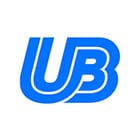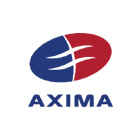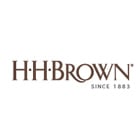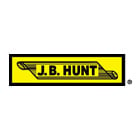SyncBack Major Version Upgrade Guide - Migration Tips
What are Version Numbers?
Software version numbers, like v1.2.3, are basically a way to track changes and updates to a piece of software. Think of it like a car model year or a book edition; it tells you which specific version you have. This numbering system, often called semantic versioning, helps everyone understand how significant the changes are between different versions.
Major Version (The "1" in 1.2.3)
A change in the major number signifies a massive update. This is the biggest kind of change, often involving a complete redesign, the addition of major new features, or changes so large that the new version is no longer compatible with the old one.
This is like the difference between a 2023 Ford Mustang and a completely redesigned 2024 Ford Mustang. They share a name, but the engine, body, and technology are fundamentally different.
Minor Version (The "2" in 1.2.3)
A change in the minor number indicates that new features or significant improvements have been added, but the core functionality of the software remains the same. The software is still backward compatible, meaning everything you could do in the previous version, you can still do in the new one. This is like a mid-year update to our 2023 Ford Mustang. It's still the same car, but the 2023.2 model now comes with a new touchscreen infotainment system or heated seats as a standard feature. It's better, but it's not a whole new car.
Release (The "3" in 1.2.3)
A change in the release number is for small fixes, most commonly to squash bugs or correct security vulnerabilities. No new features are introduced; the developers are just fixing problems with the existing version. These are the most common updates you'll see. Think of this as a manufacturer recall for our 2023.2 Ford Mustang. They found a faulty switch in the power windows. The fix, which we can call version 2023.2.1, doesn't add anything new; it just makes the car work as it was supposed to.
Sometimes you might see a fourth number, often called the build number (e.g., 1.2.3.4). This is typically an internal number used by the developers to track very small, incremental changes as they are building and testing the software before its official release. For most users, this number isn't very important.
So, in short, the version number v1.2.3 tells you it's the first major version, with two sets of feature additions, and three rounds of bug fixes. This system provides a clear and consistent way to understand the evolution of a piece of software.
Before You Start
Before updating, upgrading, or downgrading, we recommend the following simple steps:
- Backup Your Profiles: Although SyncBack automatically creates backups during major upgrades, a manual backup provides extra security. From the main menu, select 'Export Profile' and save the backup to a safe location.
- Close SyncBack: Ensure SyncBack is not running. Check the system tray (notification area) to make sure it is completely closed before running an installer.
- SyncBack Touch: If you use SyncBack Touch with your profiles, it's always a good practice to ensure both SyncBackPro/SE and SyncBack Touch are up-to-date to maintain full compatibility and performance.
- SBMS: Likewise, if you use the SyncBack Management System, check it is up-to-date.
Updating and Upgrading
The term updating is used when a new version is released that has the same major version as the one you are currently using, but a higher minor version. For example, you may be using SyncBack V11.1, and SyncBack V11.2 is released. They are both V11, which is the major version number. The new version has a higher minor version number (2). It is possible that only the release number is changed and the minor number stays the same, e.g. V11.2.3 to V11.2.4. This is also an update.
The term upgrading is used when a new major version is released. For example, you may be using SyncBack V11.8, and SyncBack V12.2 is released. The new release has a higher major version number (12).
Updating Minor Versions
Updating minor versions of SyncBack, e.g. V11.1 to V11.2, is very quick and easy. You just need to install the new version, that's it. Do not uninstall first, or install to a different folder. Just install the new version.
Upgrading Major Versions
When upgrading major versions of SyncBack, e.g. V11.2 to V12.0, it is just as quick and easy. Again, all you need to do is install the new major version. Do not uninstall first, or install to a different folder. Just install the new version. When SyncBack is first run, it will make a backup of your profiles and settings before they are also upgraded.
Watch the simple steps to upgrade to a new major version of SyncBackPro:
Downgrading Minor Versions
Downgrading a minor version, for example from V11.3 to V11.2, is usually safe. You can simply run the installer for the older version over the new one. However, always consult the release notes first. In rare cases, a change in the settings structure in a newer minor version might cause issues when downgrading. If this happens, the release notes for that version will contain a warning.
Downgrading Major Versions
SyncBackPro and SyncBackSE have a built-in rollback feature that detects when you have downgraded. For example, you may have installed V12 and later decide you want to return to using the older V11 that you were using previously. Downgrading is a simple process:
SyncBackFree does not support rollback, i.e. it does not support rolling backup to an older major version.
- Uninstall the major version you want to downgrade from. When uninstalling, it will detect you may be downgrading and ask you if you want to download the old version you want to return to. You should do this. You can choose to keep your profiles and settings during the uninstall, but that is not recommended as they are probably incompatible with the older version you are about to install.
- If you haven't already, download the last release of the older major version you want to use and install that. For example, if you are downgrading from V11 then the last released version of V10 was V10.2.152.0. It is very important you use the last release as that will make sure the downgrade goes smoothly.
- When the old version is first run, it will detect you have downgraded and ask you if you want to restore your old profiles and settings. If you do, it will also warn you about your old Intelligent Sync and Fast Backup profiles. This is explained below.
Watch the simple steps to downgrade the major version of SyncBackPro:
Intelligent Sync and Fast Backup Profiles
When you upgrade SyncBackPro/SE, e.g. from V10 to V11, when the new version is first run it will make a backup of your profiles before it updates them to make them compatible with the new version. If you decide to downgrade and revert back to using your old version then the old version will restore from that backup. That means that those profiles have not been used or changed since you upgraded. This is important as it means that any history information it is may now be outdated and incorrect.
Fast Backup and Intelligent Sync profiles keep databases that store information about the state of files. These databases are updated when a profile is run. As you have now downgraded, and the profile has been restored, then those databases are probably outdated.
For Fast Backup profiles, you may want to force a rescan. This will rescan the destination and rebuild the database.
For Intelligent Sync profiles, you should run the profile manually and on the Differences window, change the Action as appropriate.
Licensing & Upgrade Assurance
As described in the licensing terms, SyncBackPro/SE licenses are perpetual. You can use the major version you purchased indefinitely. However, this does not mean you receive a free upgrade to new versions that are released. Historically, if you purchased SyncBackPro/SE within 3 months of a new major version being released, then you could upgrade for free. If you purchased earlier than that, e.g. 6 months before a new major version was released, then you could upgrade by purchasing an upgrade license at a reduced price. You can always upgrade from an old version, no matter how old the version is.
With Upgrade Assurance, which is entirely optional, you can pay a small yearly fee to receive major version upgrades at no extra cost. Upgrade Assurance also provides technical support.
















